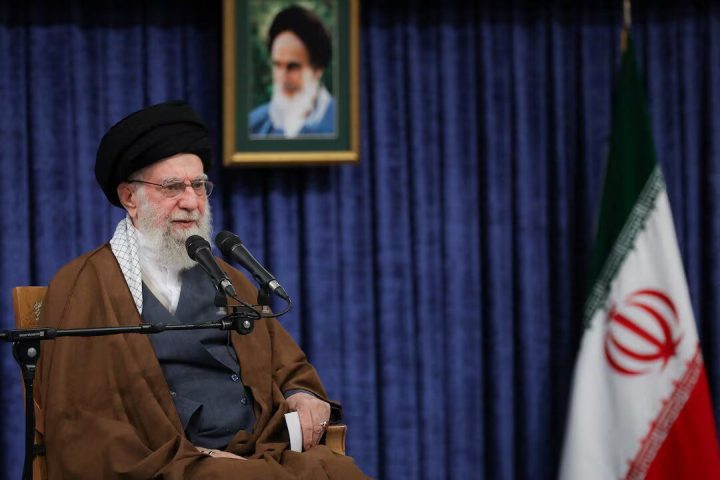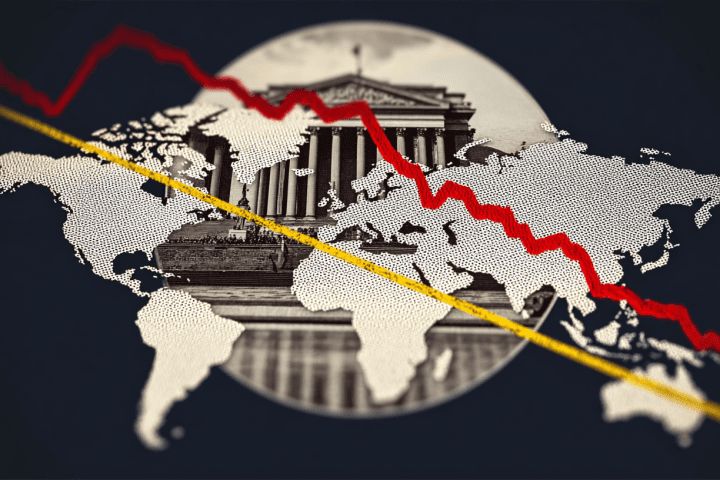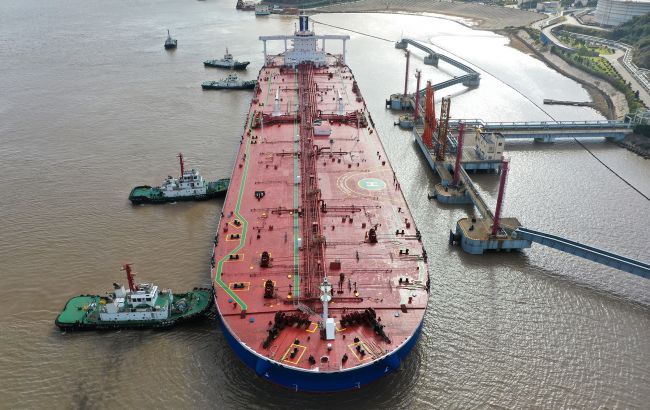The global shift from fossil fuels to renewable energy represents far more than an environmental imperative—it’s a fundamental reorganization of geopolitical power structures that have defined international relations for over a century. As nations race to decarbonize their economies, the energy transition is creating new winners and losers, reshaping security alliances, triggering supply chain competitions, and forcing businesses to navigate unprecedented complexity. The countries that dominated the fossil fuel era are facing declining influence, while those controlling critical minerals, manufacturing capacity, and clean technology are ascending. Understanding these geopolitical dynamics is essential for anyone seeking to comprehend energy prices, investment opportunities, security risks, and strategic business decisions in the coming decades. The energy transition is not just changing how we power our societies—it’s redefining global power itself.
The Declining Influence of Traditional Energy Powers
For decades, countries rich in oil and gas wielded disproportionate geopolitical influence. Saudi Arabia, Russia, the United Arab Emirates, and other fossil fuel exporters shaped international politics through energy exports, using supply manipulation as diplomatic leverage and accumulating vast wealth that funded military capabilities and foreign policy ambitions.
The energy transition threatens to undermine this power structure fundamentally. As renewable energy adoption accelerates, demand for fossil fuels will eventually peak and decline, reducing revenues that sustain petrostates’ domestic stability and international influence. This prospect creates dangerous dynamics as declining powers resist change to preserve their positions.
Russia’s actions exemplify these tensions. Facing long-term decline as Europe transitions away from Russian gas, the country has weaponized remaining energy leverage through supply restrictions, pipeline disputes, and geopolitical aggression. The Russia-Ukraine conflict partially reflects these broader energy transition dynamics, with Russia seeking to preserve influence as its primary source of geopolitical power—energy exports—faces structural decline.
Middle Eastern nations respond differently, with some like Saudi Arabia and the UAE investing oil revenues into renewable energy, green hydrogen, and economic diversification. These countries recognize that their geographic advantages—abundant sunlight and available land—could sustain energy exporter roles in a renewable-dominated world, though the geopolitical power associated with energy exports will be fundamentally different in a world of abundant, distributed energy resources.
Countries heavily dependent on fossil fuel revenues but lacking diversification strategies face the most precarious futures. Venezuela, Nigeria, Algeria, and others risk economic collapse and political instability as energy revenues decline without alternative economic foundations. This instability could create humanitarian crises, migration pressures, and security challenges affecting neighboring regions and global stability.
The Rise of Critical Mineral Powers
While fossil fuel powers decline, countries controlling critical minerals essential for renewable energy technologies are gaining strategic importance. Lithium, cobalt, rare earth elements, copper, nickel, and other materials are indispensable for batteries, solar panels, wind turbines, and electric vehicles. Geographic concentration of these resources creates new dependencies and vulnerabilities.
China dominates critical mineral supply chains comprehensively. The country controls roughly 60% of rare earth production and over 85% of processing capacity. China refines the majority of global lithium and cobalt supplies and dominates battery manufacturing. This position gives China substantial leverage over countries pursuing energy transitions dependent on these materials.
The Democratic Republic of Congo provides approximately 70% of global cobalt, often mined in dangerous conditions with child labor involvement. This concentration creates ethical dilemmas for companies and countries claiming environmental and social responsibility while depending on problematic supply chains.
Lithium reserves concentrate in the “Lithium Triangle” spanning Argentina, Bolivia, and Chile, along with Australia and China. As electric vehicle adoption accelerates, these countries gain strategic importance, though the complex processing required means that resource ownership doesn’t automatically translate to strategic control.
Indonesia holds substantial nickel reserves critical for battery production, leveraging this position through export restrictions and requirements for domestic processing. The country exemplifies how resource-rich nations are learning from fossil fuel exporters’ experiences, seeking to capture more value by controlling processing and manufacturing rather than simply exporting raw materials.
Energy Security in the Renewable Era
Energy security traditionally meant securing fossil fuel supplies—controlling oil fields, maintaining friendly relations with producer nations, protecting shipping lanes through strategic chokepoints like the Strait of Hormuz. The renewable energy transition fundamentally changes energy security calculations.
Renewable energy is domestically produced almost everywhere, potentially reducing dependence on foreign energy supplies and the geopolitical vulnerabilities such dependencies create. Countries with abundant sun, wind, or hydroelectric resources can achieve energy independence impossible in the fossil fuel era when resource distribution determined which nations could be energy self-sufficient.
However, the transition creates new vulnerabilities:
- Manufacturing Dependencies: Even if solar and wind resources are distributed globally, the manufacturing capacity for panels, turbines, and batteries concentrates heavily in China. Countries dependent on Chinese renewable energy equipment face different but real vulnerabilities compared to fossil fuel dependencies.
- Critical Mineral Concentration: As discussed, critical materials for renewable technologies concentrate in specific countries, creating new strategic dependencies that could be exploited similarly to how fossil fuels were weaponized.
- Grid Resilience: Renewable energy’s intermittency—solar doesn’t work at night, wind depends on weather—requires sophisticated grid management, energy storage, and backup systems. Cyberattacks on these complex systems could cause widespread disruptions.
- Technology Control: Intellectual property and technical expertise for renewable technologies concentrate in certain countries and companies. This knowledge asymmetry creates dependencies that could be exploited through export restrictions or technology denial.
The Russia-Ukraine conflict accelerated European recognition of these new energy security dimensions. While reducing Russian gas dependence, Europe confronted its heavy reliance on Chinese renewable equipment and supply chains. True energy security in the renewable era requires not just domestic generation but also diversified supply chains, domestic manufacturing capabilities, and strategic stockpiles of critical materials.
Impact on Energy Prices and Market Volatility
The energy transition is creating complex, often contradictory effects on energy prices. Understanding these dynamics is crucial for businesses planning investments, governments managing economic policy, and consumers facing energy cost fluctuations.
In the medium term, underinvestment in fossil fuel infrastructure combined with continued demand growth creates supply constraints driving price spikes. Energy companies facing uncertain long-term demand reduce exploration and development spending, while ESG-conscious investors withdraw capital from fossil fuel projects. These dynamics contributed to the energy price surges following the pandemic and exacerbated by the Russia-Ukraine conflict.
Simultaneously, rapidly declining renewable energy costs—solar and wind are now the cheapest electricity sources in most markets—put downward pressure on energy prices where renewable penetration is high. This creates bifurcated markets where renewable-rich regions enjoy low electricity costs while fossil-fuel-dependent regions face volatility and high prices.
The transition period creates exceptional price volatility as systems shift between energy paradigms. Weather events affecting renewable generation, fossil fuel supply disruptions, critical mineral price swings, and policy changes all create price instability that businesses and consumers struggle to navigate.
Long-term, the economics favor dramatically lower energy costs as renewable generation with near-zero marginal costs dominates systems. However, achieving this future requires massive infrastructure investment—grid upgrades, energy storage, transmission expansion—creating near-term cost pressures even as long-term economics improve.
Geopolitical Competition for Green Technology Leadership
Technological leadership in clean energy is becoming a strategic priority similar to historical competitions over military technology or space exploration. Countries recognize that dominating renewable energy, battery technology, green hydrogen, or carbon capture creates economic opportunities, reduces dependencies, and provides geopolitical leverage.
The United States, European Union, China, Japan, and South Korea are all implementing industrial policies subsidizing domestic clean energy manufacturing, research and development, and deployment. These policies—the US Inflation Reduction Act, EU Green Deal Industrial Plan, China’s Made in China 2025—represent explicit technology nationalism prioritizing domestic capabilities over pure economic efficiency.
This competition drives innovation and cost reductions benefiting global climate goals, but also creates tensions and inefficiencies. Trade disputes over subsidies, local content requirements, and intellectual property increasingly focus on clean energy technologies. The free-trade consensus that dominated recent decades is giving way to strategic competition where energy technology leadership is viewed as too important for market mechanisms alone.
Countries are forming new alliances based on energy transition strategies. The US, EU, Japan, and Australia coordinate through forums like the Quad and various critical mineral partnerships to counterbalance Chinese dominance. These groupings reflect emerging geopolitical alignments where energy transition strategy shapes diplomatic and security relationships.
Strategic Business Implications
Businesses across sectors must adapt strategies to navigate the geopolitically-driven energy transition. The implications extend far beyond energy companies to affect manufacturing, transportation, technology, finance, and essentially all economic activities.
Companies must build supply chain resilience against geopolitical disruptions. This means diversifying suppliers of critical materials and components, developing strategic stockpiles, investing in alternative technologies reducing dependence on concentrated supply chains, and building flexibility to shift sourcing rapidly when geopolitical conditions change.
Regional manufacturing strategies are supplanting global optimization approaches. Businesses are establishing production capacity in multiple regions—North America, Europe, Asia—to reduce exposure to any single country’s policies or supply disruptions. This regionalization increases costs but improves resilience and market access amid rising protectionism.
Strategic considerations for business adaptation include:
- Scenario Planning for Multiple Energy Futures: Rather than assuming a single transition pathway, businesses should prepare for scenarios ranging from rapid transition to prolonged fossil fuel use, with corresponding implications for investments, regulations, and competitive dynamics.
- Political Risk Assessment Integration: Energy-related decisions now require sophisticated geopolitical analysis. Where to site facilities, which supply chains to use, and which markets to prioritize all depend on political stability, policy trajectories, and international relationships.
- Vertical Integration and Technology Control: Companies are acquiring suppliers, developing proprietary technologies, and building capabilities internally rather than depending on potentially unstable external sources for critical inputs.
- Government Partnership Strategies: Success increasingly requires cooperating with governments on industrial policy, accessing subsidies, meeting local content requirements, and aligning with national strategic objectives.
- Sustainability and Geopolitics Balance: Companies face tensions between sustainability goals and geopolitical realities, such as Chinese solar panels being cheapest and most available but creating strategic dependencies that countries increasingly reject.
- Flexibility and Optionality: Irreversible commitments become riskier as geopolitical conditions shift rapidly. Maintaining flexibility—modular facilities, diverse technology platforms, adaptable business models—provides resilience against uncertainty.
Regional Perspectives on the Energy Transition
Different regions experience the energy transition’s geopolitical implications distinctly based on their resource endowments, energy dependencies, and strategic positions.
Europe faces perhaps the most complex transition challenges. Lacking significant fossil fuel resources (aside from Norway) and dependent on imports, Europe views the transition as a path to energy independence. However, the continent’s limited critical mineral resources and manufacturing capacity create new dependencies, particularly on China. The Russia-Ukraine conflict painfully illustrated transition period vulnerabilities as Europe simultaneously reduced Russian gas while scaling renewable alternatives.
The United States benefits from diverse energy resources—fossil fuels, renewable potential, and some critical minerals—providing strategic advantages. However, American manufacturing capacity for renewable equipment lags China substantially, driving massive industrial policy efforts to rebuild domestic supply chains. The US also leverages technological leadership in innovation and financial markets to maintain influence despite manufacturing gaps.
China views energy transition as an opportunity for global leadership, having deliberately built dominance across renewable energy supply chains over decades. The country sees clean energy technology exports as sources of economic growth, geopolitical leverage, and soft power, though growing Western resistance to Chinese dependencies threatens this strategy.
Developing nations face difficult choices between affordable energy access—often meaning continued fossil fuel use—and climate imperatives. Many countries rich in fossil fuels or critical minerals seek to leverage resources for development while navigating great power competition for their resources and alignment. The justice dimensions of energy transition—who bears costs, who captures benefits—carry geopolitical implications as developing countries demand support for transitions they didn’t cause but must undertake.
Climate Goals Versus Geopolitical Realities
The energy transition creates tensions between climate imperatives and geopolitical considerations. Rapidly reducing emissions suggests using the cheapest, most available technologies regardless of origin—predominantly Chinese renewables. However, strategic dependencies and technology competition push countries toward more expensive domestic alternatives.
This tension manifests in various ways. Climate advocates criticize tariffs and local content requirements that slow renewable deployment and increase costs. Security-focused policymakers argue that climate goals cannot justify strategic vulnerabilities from foreign dependencies. Balancing these concerns represents a central challenge of transition policy.
International climate cooperation suffers as great power competition intensifies. Technology transfer, financial support for developing countries, and coordinated transition policies all become more difficult as trust erodes and countries prioritize national interests. The geopolitics of energy transition risks undermining the cooperation necessary to address climate change effectively.
Some argue that focusing excessively on supply chain security and domestic manufacturing slows transitions dangerously, prioritizing geopolitical competition over planetary survival. Others contend that sustainable transitions require secure, resilient supply chains and that strategic dependencies undermine long-term commitment by creating vulnerabilities that opponents can exploit.
Preparing for an Uncertain Energy Future
Given the geopolitical complexity surrounding energy transition, businesses, governments, and individuals should prepare for continued uncertainty and volatility:
- Diversification Across Energy Sources: Despite transition momentum, fossil fuels will remain significant for decades. Balanced strategies maintaining access to diverse energy sources while building renewable capacity provide resilience against various futures.
- Investment in Resilience: Whether grid infrastructure, energy storage, diverse supply chains, or strategic stockpiles, investments in resilience against disruptions provide insurance against geopolitical turbulence.
- Monitoring Geopolitical Developments: Energy security increasingly depends on political relationships, policy decisions, and international conflicts. Sophisticated monitoring of geopolitical trends becomes essential for energy planning.
- Collaboration and Dialogue: Despite competition, some level of international cooperation remains necessary for effective transitions. Supporting dialogue mechanisms, multilateral institutions, and cooperative frameworks provides alternatives to pure competition.
Conclusion
The energy transition represents a fundamental geopolitical reorganization rivaling any historical shift in how power is distributed globally. Traditional fossil fuel powers face decline, critical mineral producers gain influence, technology leaders capture strategic advantages, and energy security calculations transform completely. These dynamics create price volatility, supply chain competition, technology races, and strategic maneuvering that will shape international relations for decades.
For businesses, the geopolitically-driven energy transition demands new strategic thinking integrating political risk assessment, supply chain resilience, regional diversification, and government partnerships into every major decision. The era of purely economically-optimized global supply chains is ending, replaced by politically-constrained regionalization prioritizing security alongside efficiency.
For governments, managing energy transition geopolitics requires balancing climate goals, economic interests, security concerns, and international relationships in unprecedented ways. The policies adopted today will determine which countries thrive and which struggle in the post-carbon economy.
For individuals and societies, understanding these dynamics helps make sense of energy price fluctuations, policy debates, and international tensions increasingly centered on energy transition questions. The shift to renewable energy is not just an environmental story but a geopolitical transformation affecting prosperity, security, and power for nations worldwide.
The energy transition will proceed despite geopolitical complications—climate physics and economic trends ensure that. However, the path, pace, and distribution of costs and benefits depend heavily on how countries and companies navigate the geopolitical dimensions. Success requires recognizing that energy transition is simultaneously a climate, economic, technological, and geopolitical challenge demanding integrated strategies addressing all these dimensions comprehensively.












